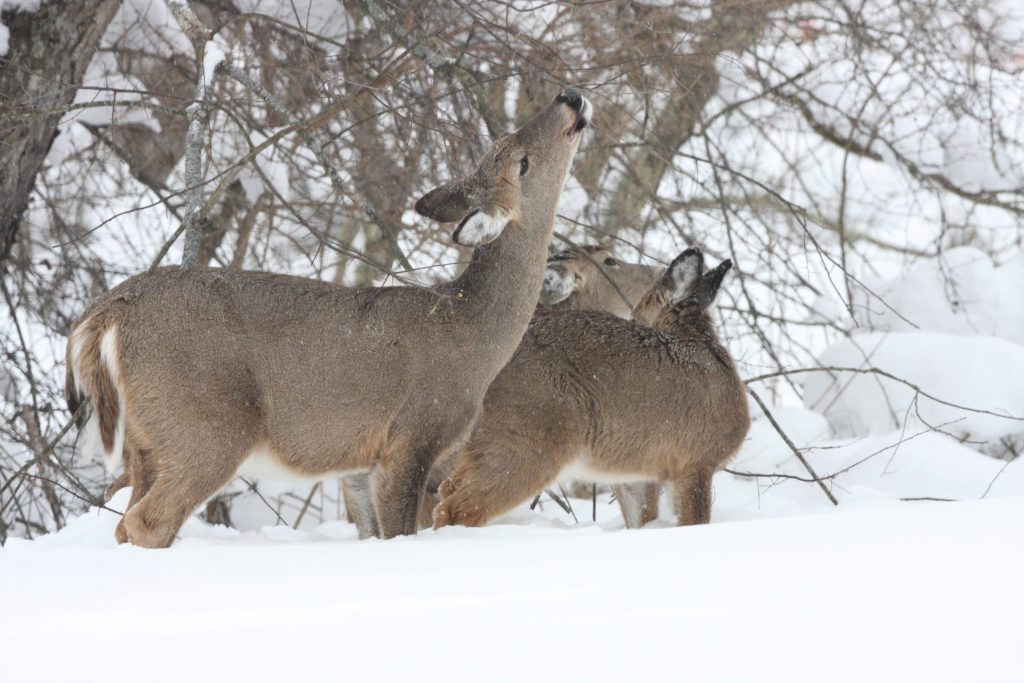There seems to be a lot of common wisdom that exists when it comes to whitetails. Such as, “it’s near full moon, so the deer are only moving at night.” Or how about, “a cold front is coming, which is why the deer are out feeding.”
Do you believe those truisms? Are they really accurate? Well, we are going to find out. But first, we need you to tell us how you think deer respond to changes in weather and moonlight.
We can then put all your ideas to the test with data from radio-collared deer.
In our current research project, we are collecting tens of thousands of locations from GPS-collared white-tailed deer (over 60,000 in 2013!). We thought it would be fun to see what people think about how deer move and see if that’s actually true. I’m certainly curious!
We came up with 12 questions about how deer might respond to different weather conditions, such as cold fronts, rain and wind, and how deer movements change with the moon’s phases.
We have even heard that some hunters notice that deer appear to become nocturnal during the early muzzleloader season in October. Do you agree?
Both adult male and female deer have been captured and fitted with GPS collars that transmit the deer’s coordinates via satellite every three hours during October. We are going to first investigate deer movements during October because it is the archery and early muzzleloader hunting seasons, and it’s before most of the breeding occurs.
The last week of October is when the rutting behavior begins to ramp up in Pennsylvania. However, compared to November, most deer still exhibit normal movements and likely are influenced more by weather conditions than breeding urges.
So, if you are ready, here is the link to take the SURVEY.
And help us get the word out! Tell your friends and Recommend us on Facebook (click the link below). Thanks!
The survey will be open for a limited time. We will summarize all the responses and share them on this blog.
If you haven’t already, sign up here to receive email notices of new blog posts to see the survey results. We’ll also be sharing the results of our analyses here.
Two undergraduate students in the College of Agricultural Sciences, Kate Williams, a Wildlife and Fisheries Science major, and Leah Giralico, a Veterinary and Biomedical Sciences major, will be analyzing the data to see how deer actually respond to weather and other factors. They will use more than 13,000 deer locations from October 2013 and October 2014.
-Duane Diefenbach
